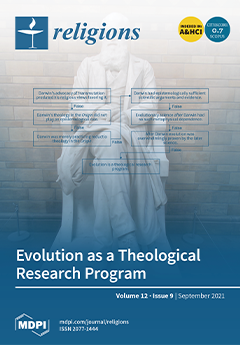This article proposes to examine in detail Aurobindo’s searching—and often quite original—criticisms of Advaita Vedānta, which have not yet received the sustained scholarly attention they deserve. After discussing his early spiritual experiences and the formative influence of Sri Ramakrishna and Swami Vivekananda on
[...] Read more.
This article proposes to examine in detail Aurobindo’s searching—and often quite original—criticisms of Advaita Vedānta, which have not yet received the sustained scholarly attention they deserve. After discussing his early spiritual experiences and the formative influence of Sri Ramakrishna and Swami Vivekananda on his thought, I outline Aurobindo’s philosophy of “realistic Adwaita”. According to Aurobindo, the sole reality is the Divine Saccidānanda, which is not only the static impersonal Brahman but also the personal, dynamic Cit-Śakti (Consciousness-Force), which manifests as everything in this universe. At various points in his corpus, Aurobindo criticizes Advaita Vedānta on three fronts. From the standpoint of spiritual experience, Aurobindo argues that Śaṅkara’s philosophy is based on a genuine, but partial, experience of the Infinite Divine Reality: namely, the experience of the impersonal nondual Absolute and the corresponding conviction of the unreality of everything else. Aurobindo claims, on the basis of his own spiritual experiences, that there is a further stage of spiritual experience, when one realizes that the impersonal-personal Divine Reality manifests as everything in the universe. From a philosophical standpoint, Aurobindo questions the logical tenability of key Advaitic doctrines, including
māyā, the exclusively impersonal nature of Brahman, and the metaphysics of an illusory bondage and liberation. Finally, from a scriptural standpoint, Aurobindo argues that the ancient Vedic hymns, the Upaniṣads, and the
Bhagavad-Gītā, propound an all-encompassing Advaita philosophy rather than the world-denying Advaita philosophy Śaṅkara claims to find in them. This article focuses on Aurobindo’s experiential and philosophical critiques of Advaita Vedānta, as I have already discussed his new interpretations of the Vedāntic scriptures in detail elsewhere. The article’s final section explores the implications of Aurobindo’s life-affirming Advaitic philosophy for our current ecological crisis.
Full article





